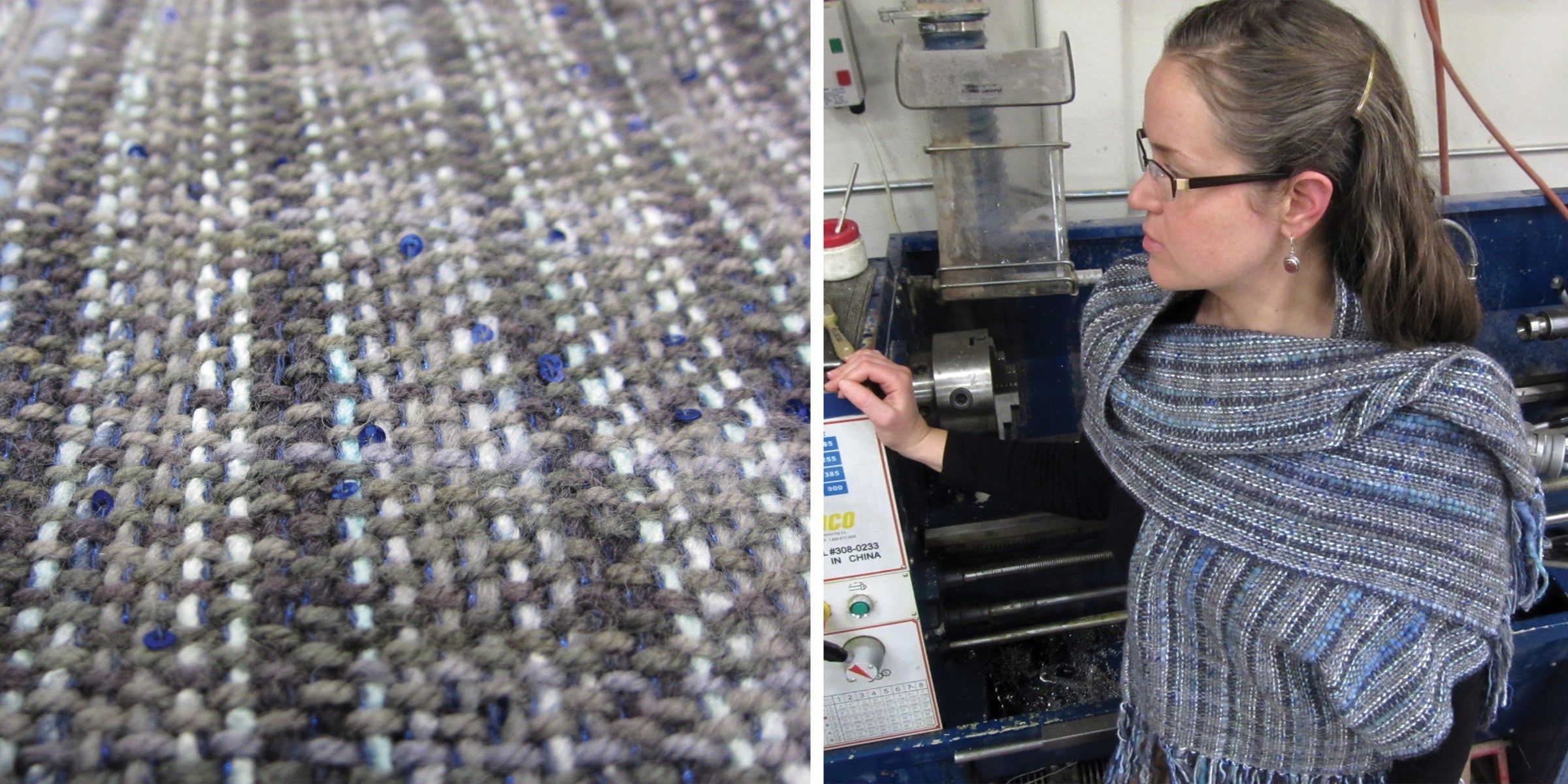By Denise Renee Grace
I just love surprises! So when Universal Yarn sent me a batch of yarn to try out as a project challenge, I was thrilled!
A general rule for me is, “when in doubt… homogenize.” Universal sent five different yarns which I wanted to blend into one piece. I first decided to place “all of the action” in the warp by using several different yarns for the warp. Using a single yarn for weft brought it all together. I’ve been into shawls lately, and decided a simple shawl would work well with the liveliness of the yarns.
Four yarns make up the warp (right to left in the photo below): I used Bamboo Bloom Handpaints in “Fugi” for a touch of texture; two shades of Poems Silk Solids- “Sterling” and “Black”, and Rozetti Cotton Gold in Deep Blue. Due to the thick slubs in the Bamboo Bloom yarn, I chose a 5-dent reed, using the full width of my 20" Flip, measuring the warp 88" long, from the rear apron bar to the warping peg (using the direct warping technique).

I “homogenized” or blended the yarns by alternating warp threads, starting with Sterling Poems Silk (SPS), then Bamboo Bloom (BB), continuing with Black Poems Silk (BPS), and going back to the Bamboo Bloom. So the sequence is SPS, BB, BPS, BB, SPS, etc., and ending with the BPS. I added sparkle with the Rozetti Cotton Gold, by measuring another warp on top of the first, again using the direct warping method. In the end, there were two yarns going through each slot and hole—one of the mixed warp and one of the sparkle threads.
For weft, I used Infusion Handpaints in “Gray Matters.” I used a fairly light beat at 8 picks per inch. To check my beat and to be sure that I had enough “air” in my cloth, I looked at the spaces between the yarns, trying to weave squares between the yarn intersections. Remember, the squares will fill in a bit when you release the tension and remove the project from the loom. Washing fills in those squares even more.

I had a pretty long weft float where the shuttle didn’t go through the shed correctly and skipped a few warp threads. I probably didn’t notice it because it was on the bottom of the fabric. Here’s how to fix a float.
- Get a short piece of weft yarn and thread it in a tapestry needle.
- Starting a few ends before the float and stopping a few ends after the float, weave the needle over and under, following the path the weft should have taken.
- Wash the fabric, trim the ends, and you're done.

Always check your fabric for floats after you remove it from the loom. Floats are much easier to repair before the fabric is washed.
I’m really pleased with how this shawl turned out! It has just the right amount of sparkle, a lot of drape, and fabulous texture – a great combination for a shawl that can take you from the office to a night on the town.

